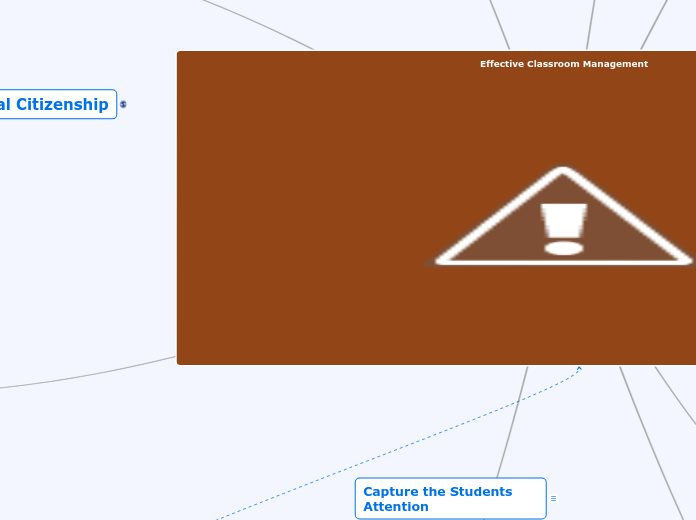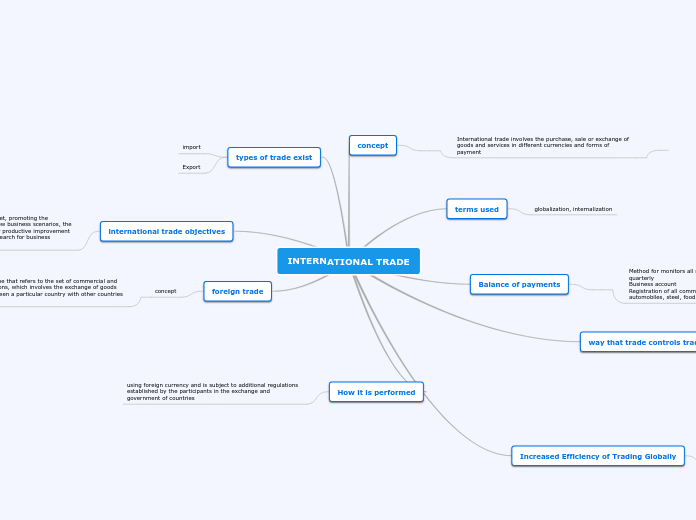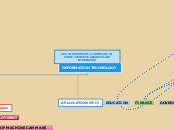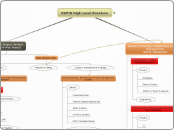Loe G.B.
Having created interactive video math games using smart board templates and seeing how highly engaging they are with the students I'd be curious to see how well they work with other math lessons year round along with alternative methods of teaching math.
Like Ashley, I am witnessing manipulatives/methods being used that I've never seen before to teach math.
How I will continually keep students engaged and ensure that every student understands is something I still ponder. I also still don't know how I would teach math year round to a split class.
Like Jasmine, I am also unsure about when to assess and how to create assessments. The one test I made I had my AT help guide me and she was the one who asked me to make a test.
During my practicum, I found my AT's version fo assessment helpful and reflective of where the class was. At the end of most lessons, he would give the students an exit ticket and mark the exist ticket. This way he was abel to track the student's progress, and the summative assessment wouldn't hold as much weight becuase he had an idea of where each studetnw as every step of the way.
-Lexia S.
During my practicum I did have the opportunity teach math and (re)introduced fractions to a grade 5/6 split from basics to adding and subtracting. Math is not my strength and because I learned math in French and given my age, it had been a very long time since I looked at fractions. I had to spend extra time learning the basics, then learning it in French, finding reliable french resources which were limited (since I was teaching in French), learning the Smartboard software and incorporating a variety of math games and manipulatives and tricks of the trade learned in our class and others. I spent an incredible amount of time preparing but lessons in general went very well as a result. Exit tickets given at every lesson proved to be very useful to help guide my lesson planning as they tested student's comprehension and gave me an idea to as to how students were feeling at the end of a lesson through the use of emoticons. I also had the opportunity to create a test and I'm pleased to say that only one person did not pass but that was expected and that overall everyone did well. So if there's anything that is square with me, it is that lesson preparation is half the battle and key to success. I learned with the students and some of them blew me away with how quickly they could process information and how they presented different ways to show an answer. I got lucky with both my TA and class.
Mindomo Group Collaobration Project #3
Eduardo Martinez
After taking EDUC 5468Q (Coding) and having previous experience with coding programs such as Scratch, I believe that mathematics might one day push towards implementing technology use for students to be engaged with mathematics. In EDUC 5178 (Science) we played Scratch games in relation to Science strands. It would be pretty cool to come up with math games on Scratch for students to play to get the idea of the strand being taught to them.
What I find so fascinating when it comes to math problems is the endless amount of ways you can answer the problem. Whenever we have had in-class activities and you have asked us to put up fingers for different ways of coming up with the answer I usually found myself only putting one or two up. I was taught the "standard" way of answering most math problems but when we took up answers it was actually fun to see the different ways my colleagues would answer some of them (and most likely how students in the classroom would too).
Through in-class activities and during my practicum I have learned that the best way to tackle a difficult subject such as math is to get students engaged with visuals and games. We have done numerous of in-class visual activities which have been beneficial as you get to see what the answer should be. The tiles we used for fraction a few weeks ago I enjoyed because I was never one who enjoyed the idea of fractions and this helped me. I could see myself using visuals and games for future practicum when dealing with mathematics
Sarah Crump
One of the things that I would like to continue to learn about is the various math manipulatives that can improve student learning. As previously mentioned, I typically find manipulatives to be more confusing than helpful, yet I realize that many students can benefit from their use. Therefore, I would like to continue to learn about and experiment with manipulatives that I could use to enhance student learning in my future teaching practice.
During one of my PD sessions, my AT learned how to multiply using the rec and recs and I found it extremely interesting. However, the most shocking thing was my AT's ability to try and use the rec and recs with his class even though he didn't completely have a handle on it. He was able to learn along with his class, which I find doesn't happen very often with teachers. Often times, I find teachers aren't comfortable letting their students know they aren't' sure, but my AT taught me the power in learning along the class and modeling the idea of the growth mindset.
-Lexia S.
One of the questions that I have is how to prepare yourself for student responses in order to effectively use Bansho as a reflect and connect strategy. I know that we have previously talked about the importance of anticipating students responses within lesson plans, however I do not feel confident in my ability to do this, particularly with the younger grades. I always like to be overly prepared and I feel more comfortable knowing exactly what will happen over the course of a lesson or presentation. Not knowing what my students may come up with and having to sort their responses based on effectiveness on the spot makes me a little nervous. I suppose the more experience I gain, the better I will be able to anticipate student responses and plan for Bansho, however I am currently questioning if I will be able to do this effectively when I initially begin my teaching practice.
- Going off Sarah, I too believe it will be hard to anticipate student responses because of how endless their responses can be. From students not grasping simple math concepts to some wanting to do harder questions. Where do we find the balance? (Eduardo)
I have learned a lot from our in-class activities so far this term. I particularly liked the lego math activity, as I believe that it is a very effective way to help students understand fractions. I typically do not learn well using manipulatives. In fact, using manipulatives often causes me more confusion than simply learning and understanding the standard algorithm; however, I found it useful to use the lego to visually see equivalencies with fractions and to see how multiplication with fractions actually works. I only learned the standard algorithm in school, so I knew how to multiply and divide fractions, but not necessary why it worked. This activity gave me a better understanding of how the concept actually works. I can imagine that being taught using this visual and interactive method prior to learning the standard algorithm could really help students develop a deeper understanding of the mathematical concepts that will help them be successful in math.
Ashley Singh
Something that peaks my interest is all the different ways math manipulatives can be used. From the discussions we have in class to my practicum, I have been introduced to so many manipulatives that I did not know existed! I am excited to incorporate them into my next practicum as much as possible and in my future as a teacher. - Ashley S.
One thing that still puzzles me is how to effectively differentiate instruction and assessment based on the different needs of students. This has been a conversation that has been had in a number of my classes regarding all subjects and I discussed it at length with my AT during my practicum. It has been helpful to talk about it in theory during class, but I feel like you can't really know how to differentiate until you know your students well enough. I believe that something that has worked for others with many students might not always work with one particular student, or a class of students. - Ashley S.
During my practicum one of the things I learned, is the importance of always having activities planned for those students who finish their work quickly; this was especially important in Math. My AT had a number of blue bins filled with math related activities that were connected to the strand we were doing at the time. Students knew that when they had completed the math activity for the day they were to move on to "Blue Bins." Establishing this routine allowed myself and my AT to work one-on-one with those students who needed more assistance. - Ashley S.
Your point is also something I learned in my own practicum. My AT's version of this was providing two different problems to work on and having the students chose which, and when they were done they would do the other. Additionally, he would just replace the numbers in the problem to keep them going. I agree with you, however, that if the students didn't have work to keep them busy the class would become out of control.
-Lexia S.
Emma Coverdale
My AT during practicum was very experienced using technology in that within our classroom each sole station had a computer (per 4 students) and the classroom had a digital viewer and smart board. I found that using technology when teaching math was very effective and relatable for students learning. I'm not experienced or comfortable when using technology and would like to find methods that would further students interests, also in teaching them something about technology rather than them teaching me. Fr example, math video games is a great tool and I would love to gain more experience in knowing how to set that up within a classroom setting to use during a lesson.
- As Emma mentioned, the use of technology could be beneficial not just for students but also for teachers as they know students will be engaged with the content and it would be fun doing so (Eduardo)
Circling my thoughts
During practicum I had taught an entire unit of multiplication. I had taught four different strategies of multiplication and then by the end of the unit gave students the choice to use which ever strategy they enjoyed the most. In extending their knowledge I had asked questions based on comparing the different strategies. For other mathematic units like fractions or geometry I want to find ways/strategies in asking effective questions for students to extend their knowledge and thinking.
Square with me
I enjoy participating in the in class activities, because it makes the activity clear and easy to comprehend. When teaching these activities I can then understand if the students are having troubles it makes it easier for me to see where they have gone wrong because of my own perspective. I had used several manipulatives within my own practicum, and I found that using lego was the most effective because it was the most relatable. I enjoyed seeing how lego can be used when teaching fractions, as I used it for teaching arrays. Many manipulatives like lego are very versatile and evidently can be used in many different strands and activities.
Jasmine Scott
Peaks my Interests
Something that has peeked my interest is the assessments. Unlike language, math is more of a right or wrong answer subject. But I am still unsure of how to put a test or quiz together. When is a good time to give one? How long should it be? How do I know if I have to modify a test to better suit a students needs? How can I tell if a student is progressing well or shows improvement? I'm sure these will be answered but for now I just had ideas whizzing around my head. - Jasmine
Over this past semester and the classes taken thus far in this semester, I can see an improvement with my math skills. That being said I still lack confidence. I do think this should be a full 2 year course for those of us that need the extra help.
That being said, when Dr. G came in, he really had me thinking of the many ways we can teach math. His whole website is the best resource I have been exposed too. I went out and bought a bunch of die to do different math activities with.
Something I also really liked was the math theatre!! Gets the students up on their feet and really be submerged in the context. - Jasmine
Math has always been one of my weakest subjects and I have not been confident that I will be able to teach it even at a primary level.
That being said, during my practicum, the class was starting their bar graph unit and I had a huge part of it! I actually did very well with the help of my AT of course! One thing in particular was I found out the students had quite the obsession with Pokemon. So during the pictograph introduction I made on Smart Notebook a Pokemon pictograph. This made them smile and also peaked their interest in the type of graph. They were then sent to make up their own surveys and complete a graph with their data! - Jasmine
Olivia Sieczkowski
Peaks my Interest
At this moment, in reflection to my experience in practicum. I am mostly interested in seeing how this "new math" will affect the students in future grades and in their careers. As a student, I was never motivated by math and often when I am teaching, I reflect on what a difference making math fun would have made in my own life. I think I would have been more open to taking advanced math classes in highschool and I would have been more confident in my abilities. I am also wondering how math centers and math activity time will reflect on paper during EQAO. Part of me thinks, the innate problem solving skills will allow students do better on EQAO, and I hope this is how math will progress in my career
During my practicum I was lucky enough to teach the Time unit within the measurement strand. In my ECE cohort, we have often discussed the issue of children in their early years having very little understanding of temporal relations. Keeping this in mind throughout the unit, I tried to come up with different ways to introduce clocks, both analog and digital. I brought in little handheld analog clocks for the students to manipulate and become familiar with. In addition to this, I used the SmartBoard to put up large analog and digital clocks that the students could manipulate with white board markers to explore. Later in the unit, I did pass out a worksheet to see if the children were comprehending the subject. Verbally, I was able to see that the students understand a lot. However, I wonder if this information would truly "stick" in Grade 1 minds.
During practicum in a Grade 1 class, I learned so much about Math. The focus at the school I was at was on math, and I was able to attend 3 Math PD days, primarily around problem solving and algebraic thinking.
My associate teacher worked exclusively with short instruction times and extended periods of 'math activity time". For the group instruction time, we used "Number Lines" and Rekonreks. Through this, I have seen the children use these strategies to complete their math activities.
I have seen these math activities really draw the students in, and become extremely interested. Rather than complete worksheet and "desk work". These math centers or "activities seemed such more developmentally appropriate for Grade 1.
Lexia Simmons
Peeks my Interest
I was able to sit in on a couple of math PD days, and one of the things piqued my interest was split grades, and how to teach them. In my school, there was an emphasis placed mapping the split curriculums over the other to satisfy both curricular expectations. I thought it was interesting how my instruction would change in a split class versus the same grade class, and how I would factor that into my everyday lesson planning.
I was also interested in the emphasis school in the TVDSB were placing on the learning of additional, subtraction, multiplication and division. The rationale is that if students are able to grasp these 4 operations then it makes mathematics easier to teach in the end. I also wondered how that would impact teaching math at the primary levels, as I was placed at the junior level.
Circling my Thoughts
One of the things that I struggled with on my practicum was the ability to anticipate students' responses and being able to craft a response on the spot. I found that often times, a child's question would throw me or what they were saying did not meet my own expectations exactly; therefore, I struggled to pivot the discussion back my expected responses.
As an extension, I found that I struggled with understanding how to change a lesson on the spot when it wasn't working out. During my practicum time, I found that a lesson was dragging on too long, and I was unable to alter the lesson.
Square with Me
During my practicum, I learned what inquiry-based learning looks like in a math class. During the "working on it" section of math class, he would often put a problem up on the smart board and have the students pair up and work through the problem together on chart paper with markers. I found this to be a very effective strategy as it allowed the students to move around the room or hallways and cooperate with one another. During the "reflect and connect" section, my AT would showcase the different strategies each pair came up with to solve the same problem, which I thought was great. I believed this allowed the students to understand that there are different ways to solve a problem and encouraged a sense of pride in their ability to solve the problem.
Sounds very similar to what we do in class! Yay!









